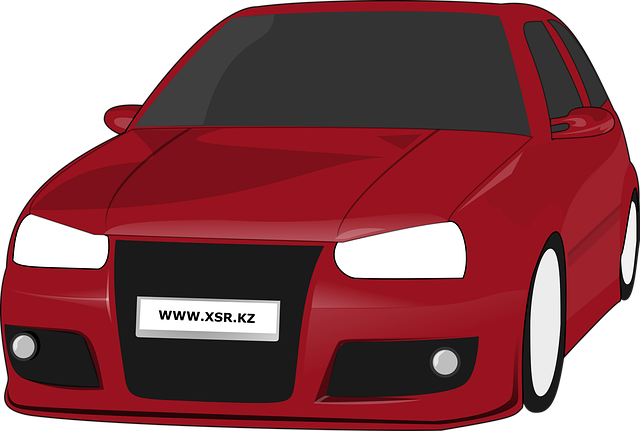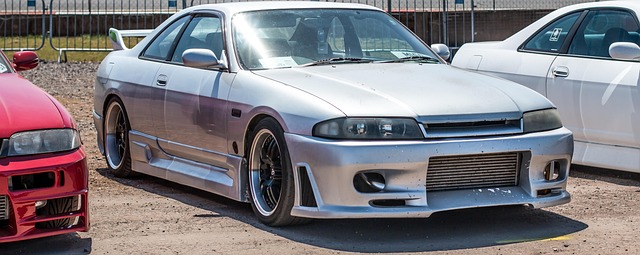Throttle response, a key vehicle dynamic, is optimized through Select Engine Tuning services, enhancing acceleration while maintaining efficiency. This involves understanding driver input, electronic controls, and engine tuning, addressing bottlenecks through components like engine rebuilding and suspension setup adjustments. For two-wheeler racing, fine-tuning spark timing, fuel injection, and compression ratios based on modifications significantly improves throttle response and steering agility.
Looking to unleash your vehicle’s full potential? Improving throttle response is key for a smoother, more enjoyable driving experience. This article guides you through the process, focusing on three critical steps: understanding the intricate dynamics of throttle response, identifying and overcoming performance bottlenecks, and fine-tuning engine settings for optimal results. Discover how selecting the right engine tuning can transform your vehicle’s performance, ensuring quick and responsive acceleration without compromising reliability.
- Understand Throttle Response Dynamics
- Identify and Address Performance Bottlenecks
- Fine-Tune Engine Settings for Optimal Response
Understand Throttle Response Dynamics

Throttle response refers to an engine’s ability to accelerate in response to input from the driver. It’s a crucial aspect of vehicle dynamics, directly impacting both performance and drivability. Understanding how throttle response works involves grasping the interaction between the driver’s foot input (via the accelerator pedal), the vehicle’s electronic control units, and the engine itself. The engine’s tuning plays a pivotal role in optimizing this dynamic.
Selecting the right Engine Tuning, such as those offered by professional car tuning services near you, can significantly enhance throttle response without compromising fuel efficiency or environmental impact. Eco-friendly engine tuning methods focus on fine-tuning existing systems to improve performance while adhering to modern emissions standards. A step-by-step engine tuning guide can walk you through the process, but it’s essential to consult professionals for optimal results, especially when pursuing significant performance upgrades.
Identify and Address Performance Bottlenecks

Identifying performance bottlenecks is a crucial step in enhancing throttle response. This involves a thorough inspection of various components within your vehicle’s system. For instance, engine rebuilding and tuning can significantly impact overall performance. Consider assessing the state of your engine, checking for any leaks, or outdated parts that might restrict airflow and efficiency. A select engine tuning process can help optimize fuel injection, ignition timing, and compression ratio, ensuring each element works in harmony to deliver faster and more responsive acceleration.
Furthermore, don’t overlook the role of a well-optimized performance suspension setup. Aligning your vehicle’s suspension to match its power potential can enhance cornering abilities while minimizing body roll. This, in turn, improves driver control and allows for more precise input during acceleration, effectively addressing another potential bottleneck. Car tuning services near me offer specialized knowledge to fine-tune these aspects, ensuring every modification contributes to a smoother, faster throttle response.
Fine-Tune Engine Settings for Optimal Response

Fine-tuning your engine settings is a key step in achieving improved throttle response, especially when aiming for an aggressive steering response. This process involves carefully selecting and adjusting various parameters unique to your vehicle or aviation powerplant modifications. By optimising spark timing, fuel injection, and compression ratios, you can unlock the full potential of your engine, resulting in faster acceleration and a more responsive drive.
When it comes to two-wheeler power enhancement for racing purposes, precise engine preparation is paramount. Adjusting these settings requires a deep understanding of the vehicle’s dynamics, considering factors like cylinder head porting, valve timing, and exhaust system design. The goal is to create a symphony of power that delivers instant torque at low RPMs, ensuring an exhilarating ride while navigating through turns with racing-ready speed.
By understanding throttle response dynamics, identifying performance bottlenecks, and fine-tuning engine settings with select engine tuning techniques, you can significantly improve your vehicle’s throttle response. These strategies ensure a smoother, faster, and more enjoyable driving experience. Remember that optimal engine settings may vary based on your vehicle’s make and model, so always consult with experts for tailored advice.
